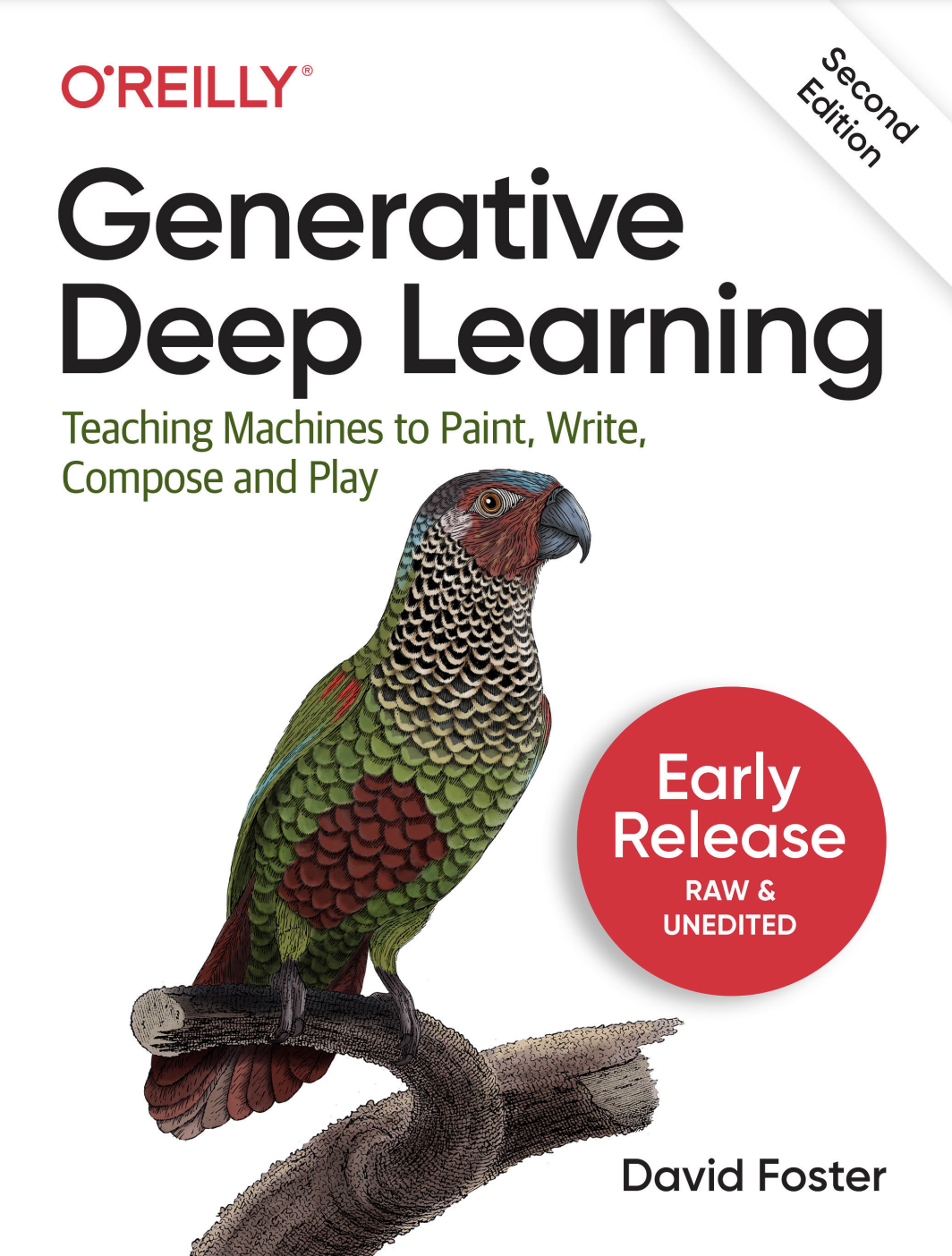The official code repository for the second edition of the O'Reilly book Generative Deep Learning: Teaching Machines to Paint, Write, Compose and Play.
Below is a outline of the book chapters:
Part I: Introduction to Generative Deep Learning
- Generative Modeling
- Deep Learning
Part II: Methods
- Variational Autoencoders
- Generative Adversarial Networks
- Autoregressive Models
- Normalizing Flows
- Energy-Based Models
- Diffusion Models
Part III: Applications
- Transformers
- Advanced GANs
- Music Generation
- World Models
- Multimodal Models
- Conclusion
To download some of the datasets for the book, you will need a Kaggle account and an API token. To use the Kaggle API:
- Sign up for a Kaggle account.
- Go to the 'Account' tab of your user profile
- Select 'Create API Token'. This will trigger the download of
kaggle.json, a file containing your API credentials.
Create a file called .env in the root directory, containing the following values (replacing the Kaggle username and API key with the values from the JSON):
JUPYTER_PORT=8888
TENSORBOARD_PORT=6006
KAGGLE_USERNAME=<your_kaggle_username>
KAGGLE_KEY=<your_kaggle_key>
This codebase is designed to be run with Docker.
If you've never used Docker before, don't worry! I have included a guide to Docker in the Docker README file in this repository. This includes a full run through of why Docker is awesome and a brief guide to the Dockerfile and docker-compose.yml for this project.
If you do not have a GPU, run the following command:
docker-compose build
If you do have a GPU that you wish to use, run the following command:
docker-compose -f docker-compose-gpu.yml build
If you do not have a GPU, run the following command:
docker-compose up
If you do have a GPU that you wish to use, run the following command:
docker-compose -f docker-compose-gpu.yml up
Jupyter will be available in your local browser, on the port specified in your env file - for example
http://localhost:8888
The notebooks that accompany the book are available in the /notebooks folder, organized by chapter and example.
The codebase comes with an in-built data downloader helper script.
Run the data downloader as follows (from outside the container), choosing one of the named datasets below:
bash scripts/download.sh [faces, bricks, recipes, flowers, wines, cellosuites, chorales]
Tensorboard is really useful for monitoring experiments and seeing how your model training is progressing.
To launch Tensorboard, run the following script (from outside the container):
<CHAPTER>- the required chapter (e.g.03_vae)<EXAMPLE>- the required example (e.g.02_vae_fashion)
bash scripts/tensorboard.sh <CHAPTER> <EXAMPLE>
Tensorboard will be available in your local browser on the port specified in your .env file - for example:
http://localhost:6006
To set up a virtual machine with GPU in Google Cloud Platform, follow the instructions in the Google Cloud README file in this repository.
Some of the examples in this book are adapted from the excellent open source implementations that are available through the Keras website. I highly recommend you check out this resource as new models and examples are constantly being added.
